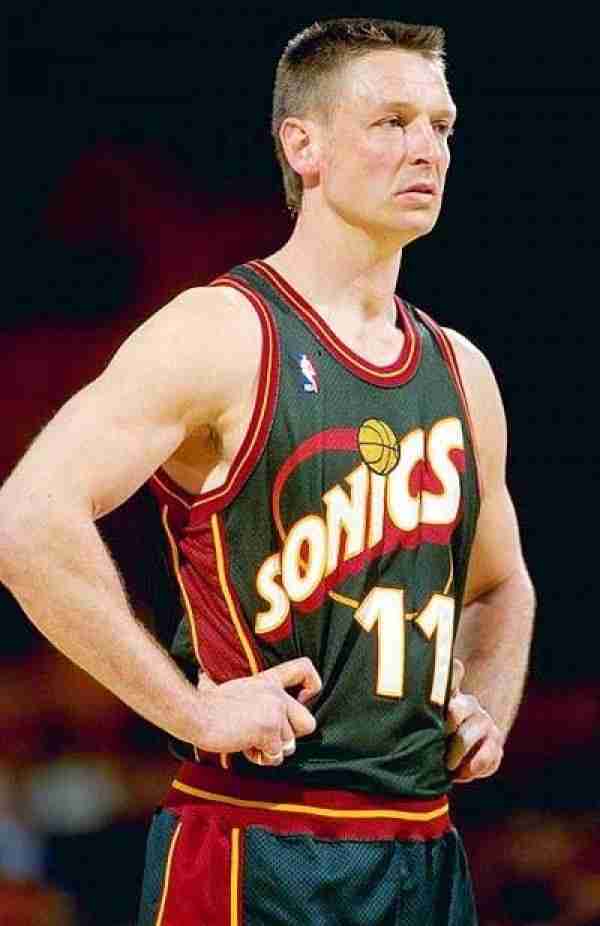How well does individual ORtg for certain players associate with their team's ORtg in the playoffs? Can this give us a fair impression of which player's offense was most relevant for their team's offensive performance?
This is especially relevant when it comes to the discussion of whether Stockton was merely "secondary to Malone in his role" as Doctor MJ put it or if he was more of a legit 1b, or even 1a, as colts18 keeps insisting. I think this matters when you compare Stockton with players like Isiah Thomas and Steve Nash, who were considered the undisputed "alpha" of their respective teams in their prime (1985-1990 Pistons and 2005-2010 Suns).
So I scraped the individual ORtgs of Isiah, Stockton, and Nash to see how well their ORtgs associates with their Team's ORtgs.
As you can see below for IT:

Every empty circle corresponds to a playoff game. As you can see for IT, the higher his ORtg the better the Pistons performed on offense, in general. For example, his two highest ORtgs (149 in both cases) corresponds to a team ORtg of 144.4 (
https://www.basketball-reference.com/boxscores/198705240DET.html) and 111.6 (
https://www.basketball-reference.com/boxscores/199005260CHI.html).
If you draw a line that best approximates/predicts ALL values you get a line with a slope of 0.23, meaning for every point increase of individual ORtg (x-axis), the team ORtg (y-axis) increases with 0.23 points on average. 1 would mean a perfect association, and 0 no relation at all.
By itself, this chart doesn't mean much without teammates. That's why I also plotted the association between individual ORtg and team ORtg for other "core" members of the Pistons during IT's prime:

Now this is interesting! This chart, imo, indicates that while IT was a big factor in the Piston's offensive performance, he did get substantial help from Dantley, and Dumars. What is especially interesting is that Dantley has a slope of 0.30, which is higher's than Isiah's. Does this mean he was more important to the offense than Isiah's? Well I don't think it's that clear, because Dantley played less than half of the total games as IT did during this time period:
What also is interesting is that Aguirre ORtg doesn't seem to be very meaningful to the team's overall ORtg, meaning he could have bad games and the Piston's wouldn't skip a beat on offense. Conversely, he could have a great individual ORtg, but that wouldn't necessarily translate to a higher team ORtg. To a lesser extreme that also applies to Laimbeer. Conclusion? I have to admit that while Isiah was the 'alpha' on this team, he did have some substantial help, at least from Dantley '87 and '88, and from Dumars.
So what about the Jazz and the Suns? Well have a look below:


In both time-periods, 1988-1993 and 1994-1998, I think it's very clear that Malone is carrying the team. That's not to say Stockton is not contributing, in fact his slope is larger than IT's (even though I'm not sure we can really compare the slopes from players from two different teams, I think it's fairer to compare players from the same team), he is a clear second to Malone. The association between Stockton's ORtg and his team was definitely stronger than Hornacheck's though.
Now for the Suns:

While I'm not sure if Nash is head-and-shoulders above the rest, his ORtg best correlates with the team's ORtg. The next two highest are Shawn Marion and Jason Richardson. Richardson only played 16 games though, so pretty small sample size.
In the end, this was a fun thought experiment to find out and see if it is possible to dissect an individual player's contribution to team's ORtg. I don't think you can make definite claims, as always with any stats context matters just as well, if not more, but it is nice to have stats/numbers visualized.
Note: I don't think individual ORtg is perfect, if I understand it correctly it seems like a box-metric stat (
https://www.basketball-reference.com/about/ratings.html), and that has its inherent limitations. Still, it was available to scrape from basketball-reference and this provided me a nice exercise to make some tables and charts.




























